Mirrors
Definition: devices which reflect light
More specific terms: metal-coated mirrors, dielectric mirrors, Bragg mirrors, crystalline mirrors, first surface mirrors, parabolic mirrors, variable reflectivity mirrors, deformable mirrors, laser mirrors, laser line mirrors, fiber loop mirrors, semiconductor saturable absorber mirrors, supermirrors
German: Spiegel
How to cite the article; suggest additional literature
Author: Dr. Rüdiger Paschotta
A mirror is an optical device which can reflect light. Usually, however, only those devices are meant where the angle of reflection equals the angle of incidence (see Figure 1). This means that diffraction gratings, for example, are not considered as mirrors, although they can also reflect light.
Mirror surfaces do not need to be flat; there are mirrors with a curved (convex or concave) reflecting surface (see below).
This article deals mostly with optical mirrors as used in optics and laser technology, for example, and in other areas of photonics.
Properties of a Mirror
Various basic properties characterize a mirror:

- The reflectivity (or reflectance) is the percentage of the optical power which is reflected. Generally, it depends on the wavelength and the angle of incidence, for non-normal incidence often also on the polarization direction.
- The reflection phase is the phase shift of reflected light, i.e., the optical phase change obtained when comparing light directly before and directly after the reflection. The phase shift can depend on the wavelength and the polarization direction. If the phase change is different between s and p polarization (for non-normal incidence), the polarization state of incident light will in general be modified, except if it is purely s or p polarization.
- Mirrors work only in a limited wavelength range, i.e., they exhibit the wanted reflectivity only within that range. The width of that range is called the reflection bandwidth. Of course, its exact value generally depends on the angle of incidence, the polarization and on the tolerance for the reflectivity.
- Similarly, there can be a limited range of angles of incidence, particularly for dielectric mirrors.
- The surface shape (e.g. spherically convex curved) is also relevant, see below.
Additional properties can be relevant in various applications:
- A high surface quality is often important in laser technology. The surface flatness of laser mirrors and others is often specified in wavelengths, e.g. λ / 10. As surface defects are largely a random phenomenon, only worst-case or statistical specifications can be given. For small localized defects, it is common to give “scratch & dig” specifications according to the US standard MIL-REF-13830B: there are two numbers, quantifying the severity of scratches (shallow markings or tearings) and digs (pit-like holes) basically by a comparison of their visual appearance with those of defects in certain standard parts. A quality figure of simple parts could be 80-50, a commercial quality is 60-40, laser mirrors should normally have 20-10 or better, and high precision parts can have 10-5. There is also the standard ISO 10110-7, which also contains a more rigorous definition based on the size of defects rather than only their visual appearance.
- For use with high-power lasers, the optical damage threshold may be of interest – particularly in conjunction with pulsed lasers, as these tend to have high peak powers. It is often specified for nanosecond pulses.
Types of Mirrors
Metal-coated Mirrors – Back Side and First Surface Mirrors
Ordinary mirrors as used in households are often silver mirrors on glass. These basically consist of a glass plate with a silver coating on the back side. The coating is thick enough to suppress any significant transmission from any side. Nevertheless, the reflectivity is substantially below 100%, since there are absorption losses of a few percent (for visible light) in the silver layer.
Household mirrors typically have the coating on the back side, so that one has a robust glass surface outside, which can be cleaned easily, and the coating on the back side (with an additional layer) is well protected. For other applications, one uses first surface mirrors, where the light is incident directly on the coating and does not reach the mirror substrate.
For use in laser technology and general optics, more advanced types of metal-coated mirrors have been developed. These often have additional dielectric layers on top of the metallic coating in order to improve the reflectivity and/or to protect the metallic coating against oxidation (enhanced and protected mirrors). Different metals can be used, e.g. gold, silver, aluminum, copper, beryllium and nickel/chrome alloys. Silver and aluminum mirrors are particularly popular. Others are mostly used as infrared mirrors.
The article on metal-coated mirrors gives more details.
Dielectric Mirrors
The most important type of mirror in laser technology and general optics is the dielectric mirror. This kind of mirror contains multiple thin dielectric layers. One exploits the combined effect of reflections at the interfaces between the different layers. A frequently used design is that of a Bragg mirror (quarter-wave mirror), which is the simplest design and leads to the highest reflectivity at a particular wavelength (the Bragg wavelength).
In contrast to some metal-coated mirrors, dielectric mirrors are usually made as first surface mirrors, which means that the reflecting surface is at the front surface, so that the light does not propagate through some transparent substrate before being reflected. That way, not only possible propagation losses in the transparent medium are avoided, but most importantly additional reflections at the front surface, which could be particularly relevant for non-normal incidence.
Generally, dielectric mirrors have a limited reflection bandwidth. However, there are specially optimized broadband dielectric mirrors, where the reflection bandwidth can be hundreds of nanometers. Some of those are used in ultrafast laser and amplifier systems; they are sometimes called ultrafast mirrors, and they also need to be optimized in terms of chromatic dispersion.
Laser mirrors as used to form laser resonators, for example, are also usually dielectric mirrors, having a particularly high optical quality and often a high optical damage threshold. Some of them are used as laser line optics, i.e., only with certain laser lines. Also, there are supermirrors with a reflectivity extremely close to 100%, and dispersive mirrors with a systematically varied thin-film thickness. They can be used for high-Q optical resonators, for example.
In some cases, dielectric mirrors should also be polished on the back side – in particular, when some amount of light transmission is required, e.g. for output couplers of lasers.
Dielectric mirrors can be designed as cold mirrors or hot mirrors, which both can be used for removing unwanted infrared radiation – usually for reducing the thermal load on an optical system.
See the article on dielectric mirrors for more details.
Dichroic Mirrors
Dichroic mirrors are mirrors which have substantially different reflection properties for two different wavelengths. They are usually dielectric mirrors with a suitable thin-film design. For example, they can be used as harmonic separators in setups for nonlinear frequency conversion.
Curved Mirrors
While many mirrors have a plain reflecting surface, many others are available with a curved (convex or concave) surface, for example for focusing laser beams or for imaging applications.
Most curved mirrors have a spherical surface, characterized by some radius of curvature R. A mirror with a concave (inwards-curved) surface acts a focusing mirror, while a convex surface leads to defocusing behavior. Apart from the change of beam direction, such a mirror acts like a lens. For normal incidence, the focal length (disregarding its sign) is simply R / 2, i.e., half the curvature radius. For non-normal incidence with an angle θ against the normal direction, the focal length is (R / 2) · cos θ in the tangential plane and (R / 2) / cos θ in the sagittal plane.
There are also parabolic mirrors, having a surface with a parabolic shape. For tight focusing, one often uses off-axis parabolic mirrors, which allow one to have the focus well outside the incoming beam.
Deformable Mirrors
There are deformable mirrors, where the surface shape can be controlled, often with many degrees of freedom (possibly several thousands). Such mirrors are mostly used in adaptive optics for correcting wavefront distortions.
Variable Reflectivity Mirrors
While most mirrors have a uniform reflectance across their reflecting area, there are also variable reflectivity mirrors, where the reflectance depends on the position. These are also called graded reflectivity mirrors. They are used in lasers with unstable resonators, also as variable optical attenuators.
Substrate Shapes
Mirror substrates in optics and laser technology often have a cylindrical form, for example with a diameter of 1 inch and a thickness of a couple of millimeters. However, there are also substrates with a rectangular, elliptical or D-shaped front surface, for example. Besides, there are prism mirrors, where a reflecting coating is placed on a prism, and retroreflectors.
Suppliers
The RP Photonics Buyer's Guide contains 186 suppliers for mirrors. Among them:

EKSMA OPTICS
Wide selection of dielectric and metallic mirrors from stock. Precision custom mirrors can be manufactured upon request.

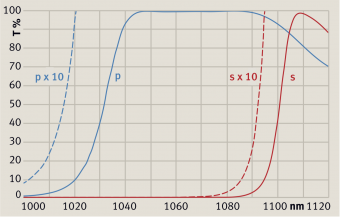
Laseroptik
LASEROPTIK can produce a wide range of laser mirrors with high reflectivity (HR) or partial reflectivity at given wavelength. We can also make speciality mirrors, e.g. with extremely broad reflection bands.
We use different coating technologies depending on your detailed requirements.

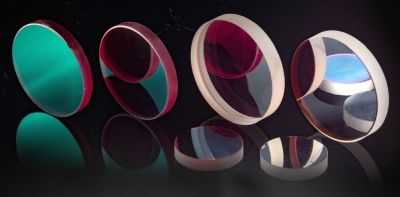
Shanghai Optics
At Shanghai Optics we manufacture custom optical precision mirrors for a wide range of applications. Life sciences, astronomy, metrology, and solar engineering are only a few of the industries which depend on our precision mirrors and other optical components.


Edmund Optics
Edmund Optics offers a range of laser mirrors for use from the extreme ultraviolet (EUV) to the far IR. Laser mirrors designed for dye, diode, Nd:YAG, Nd:YLF, Yb:YAG, Ti:sapphire, fiber, and many more laser sources are available as flat mirrors, right angle mirrors, concave mirrors, and other specialty shapes. Ultrafast laser line mirrors designed to provide high reflection with minimal group delay dispersion (GDD) for femtosecond pulsed lasers including Er:glass, Ti:sapphire, and Yb:doped laser sources are also available.
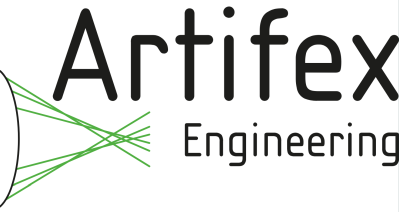

Artifex Engineering
Artifex Engineering offers custom mirrors tailored to your requirements. Our mirrors can be manufactured in almost any shape: round, rectangular, elliptical, or any other shape including cut-outs and drill holes. Holes may also be drilled at an angle to the surface normal. We offer dielectric coatings and metal coatings (aluminium, silver or gold) with protective overcoat. Dielectric coatings are particularly developed for the respective application and enable precise wavelength ranges, so that individual wavelengths or selected ranges can be specified. Visit our product page for more information. We look forward to your inquiry.


Knight Optical
As well as an array of laser mirrors, we also offer a variety of stock and custom mirrors. Amongst our wide-ranging portfolio, we provide parabolic and rod & cone mirrors, parabolic & ellipsoidal reflectors, concave and elliptical mirrors as well as back-surface and front-surface mirrors. What's more, custom-made mirrors can include wavelength-specific coatings for optimum operation.
Questions and Comments from Users
Here you can submit questions and comments. As far as they get accepted by the author, they will appear above this paragraph together with the author’s answer. The author will decide on acceptance based on certain criteria. Essentially, the issue must be of sufficiently broad interest.
Please do not enter personal data here; we would otherwise delete it soon. (See also our privacy declaration.) If you wish to receive personal feedback or consultancy from the author, please contact him e.g. via e-mail.
By submitting the information, you give your consent to the potential publication of your inputs on our website according to our rules. (If you later retract your consent, we will delete those inputs.) As your inputs are first reviewed by the author, they may be published with some delay.
See also: mirror substrates, reflectivity, reflectance, metal-coated mirrors, dielectric mirrors, Bragg mirrors, quarter-wave mirrors, crystalline mirrors, deformable mirrors, laser mirrors, output couplers, supermirrors, dichroic mirrors, parabolic mirrors, cold mirrors, hot mirrors
and other articles in the category general optics
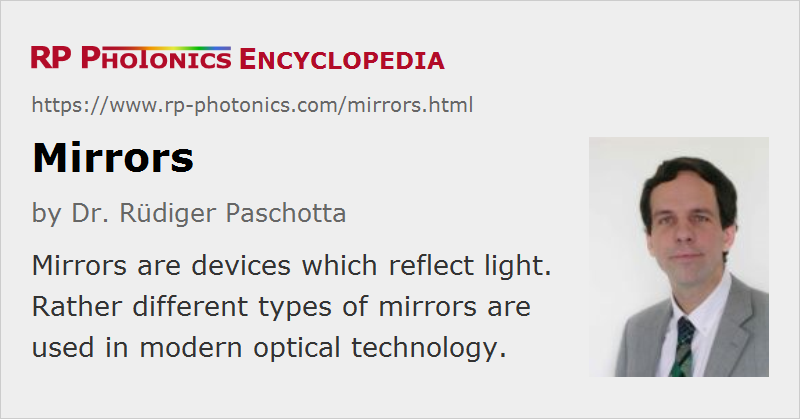 |




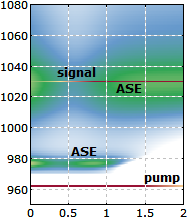


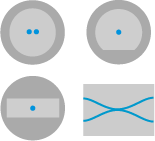

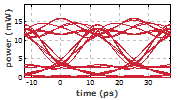
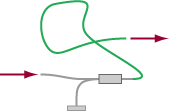
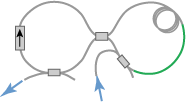
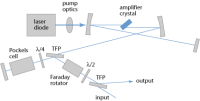

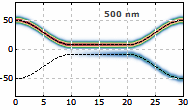
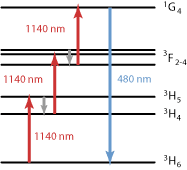

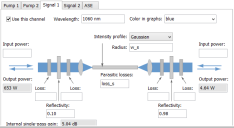
If you like this page, please share the link with your friends and colleagues, e.g. via social media:
These sharing buttons are implemented in a privacy-friendly way!